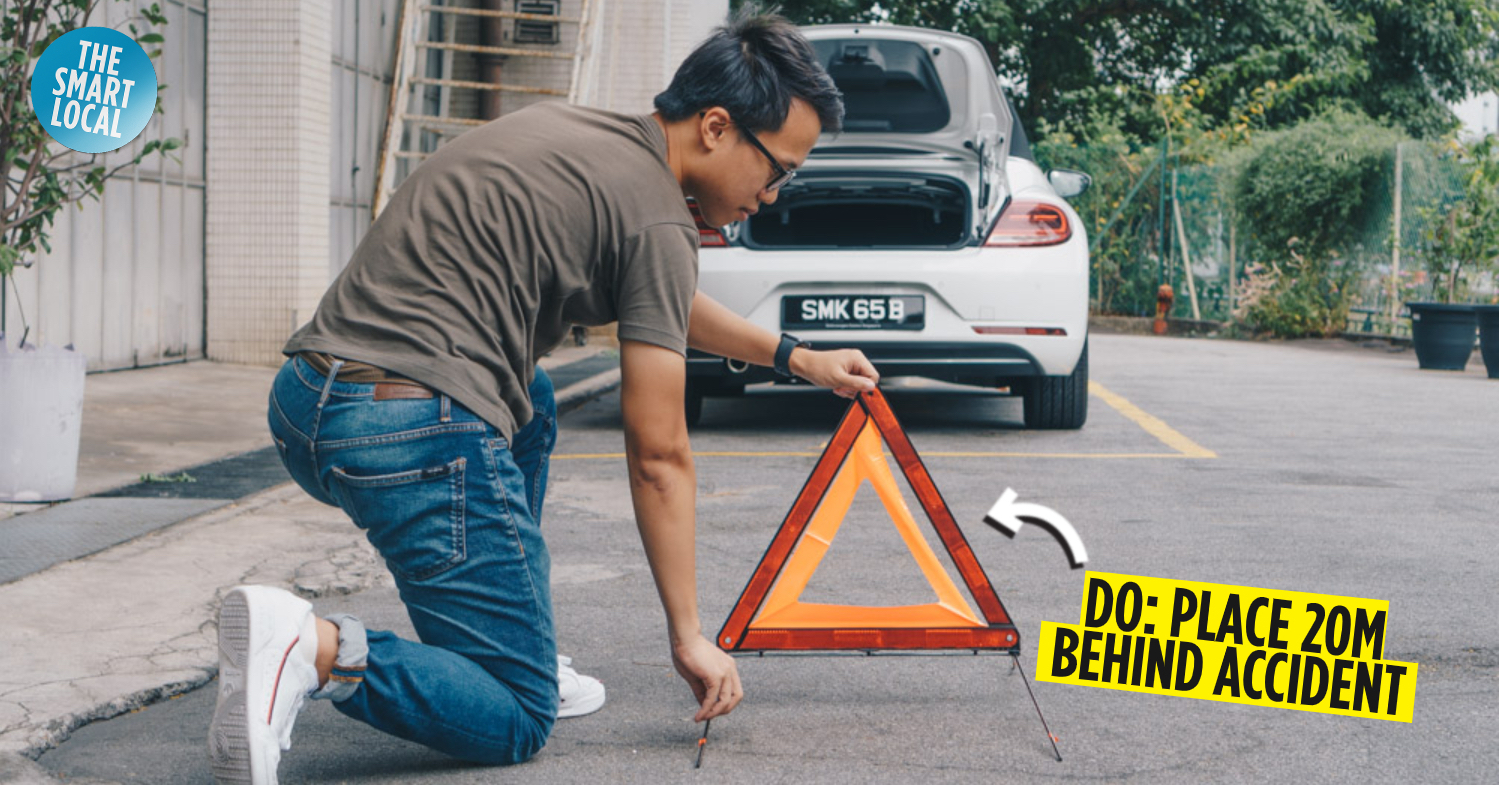Common car accident mistakes in Singapore
Getting into a car accident is commonplace in Singapore, especially when roads get crowded and congested. No matter how skilled you are at driving, it pays to be prepared for any situation that might arise as you ply the roads.
Singapore’s traffic laws are some of the most stringent in the world, so drivers need to be wary of potential pitfalls that might land you in hot soup. Here are some common mistakes drivers make in an accident, along with helpful tips to keep on the right side of the law.
1. Driving away from the accident scene
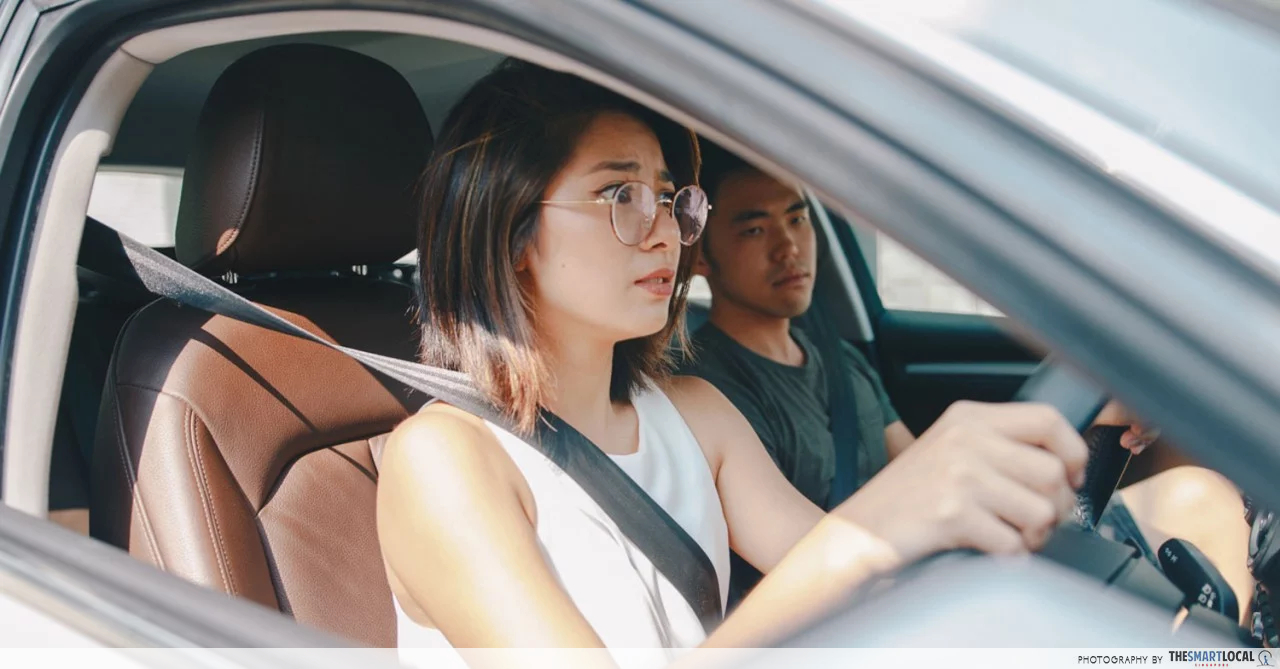
In an accident, the first and most important thing is to stop your vehicle.
Despite how scary they seem, most road accidents aren’t serious. Nonetheless, the first and most important thing to do in any accident is to bring your vehicle to a stop. Driving off immediately after an accident is a criminal offence and you could be fined as much as $3,000 or jailed for up to a year.
After stopping, ensure that no one is seriously hurt and that no public property is damaged. As a rule of thumb, vehicles have to be kept in place and you have to inform the police (and ambulance, if necessary) if the accident involves:
- Fatalities
- Pedestrians and cyclists
- Injuries serious enough to be admitted to hospital
- Damage to public property (e.g. road dividers, traffic lights)
- Foreign vehicles
2. Blocking the road
Otherwise, if everyone is unscathed, and if foreign vehicles and public property are not involved, heave a sigh of relief! Now, you’ve got to focus on clearing the road quickly in order to avoid obstructing traffic and risking more accidents.
Immediately deploy your hazard triangle and thoroughly document the scene and trade your particulars.
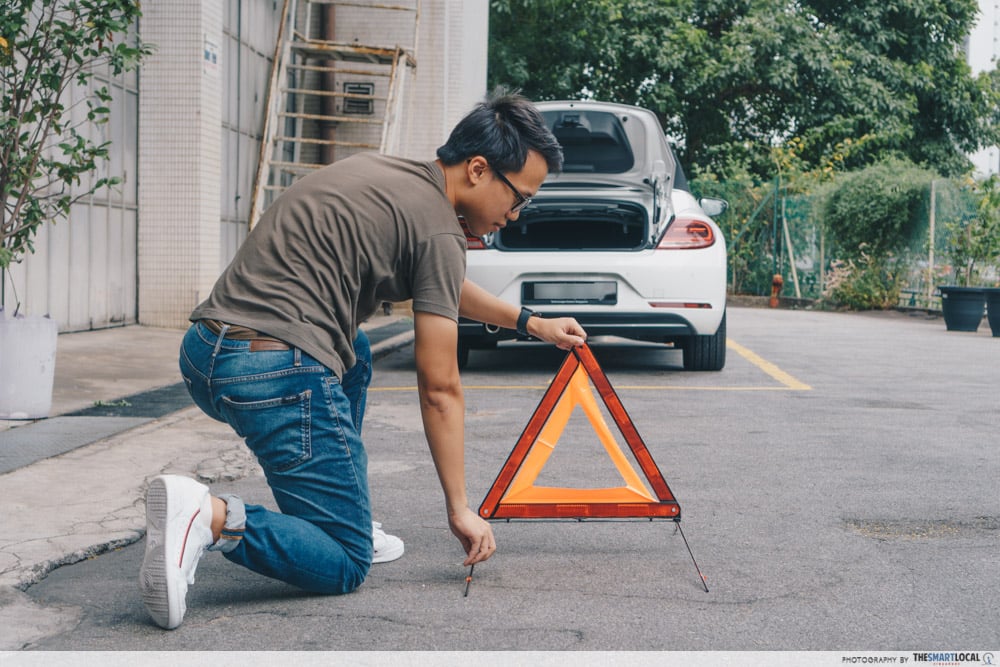
After a car accident in Singapore, be sure to correctly deploy your hazard triangle in order to avoid a pile-up collision
After you’re done, double-check that there’s no dangerous debris left behind, and remember to snag your hazard triangle on the way back to the car.
If you’re on a highway and your car is immobilised, EMAS Vehicle Recovery Service can be activated to tow your car to the nearest designated car park within 15 minutes – at absolutely no cost! Simply call the LTA hotline at 1800-2255 582.
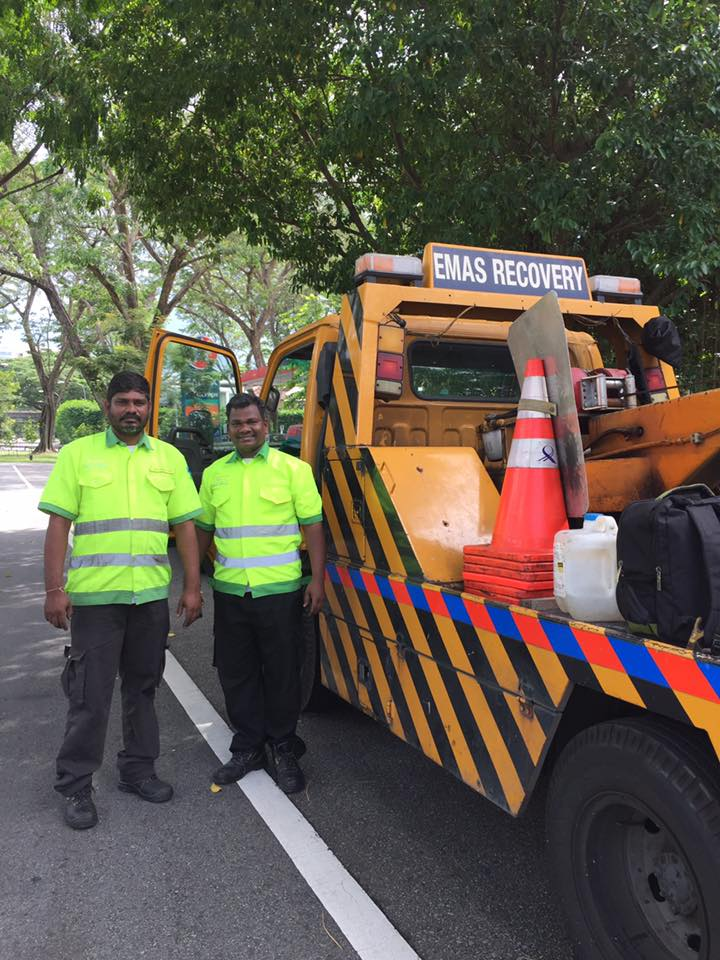
If you get into a car accident on an expressway in Singapore, EMAS Vehicle Recovery Staff will tow your immobilised vehicle to the nearest car park for free
Image credit: Dawn Koh
3. Immediately jumping out of your car
Cars in Singapore cost a bomb, and it’s easy to understand why some drivers rush out of the car to check if their prized possession has been scraped, scratched or sullied.
However, it pays to be cautious even with the smallest collisions where the force can still easily dislocate, sprain or even fracture the bones in your body. The adrenaline rush from the shock and panic can even numb pains and aches – you might not even realise you’re injured until it’s too late!
After impact, calm yourself down with a few breaths as you assess the situation. Check for fractures, sprains and cuts by flexing your joints carefully, and by looking out for bleeding, redness or swelling and deformity.
Most minor car accidents will leave you unscathed, but sometimes the impact can result in dangerous spine-related injuries. You should stay put and wait for an ambulance if you feel a literal pain in the neck. Of course, if smoke is billowing from your bonnet or if there’s a bonfire, swiftly and carefully evacuate yourself from the more immediate danger.
4. Calling for an ambulance indiscriminately
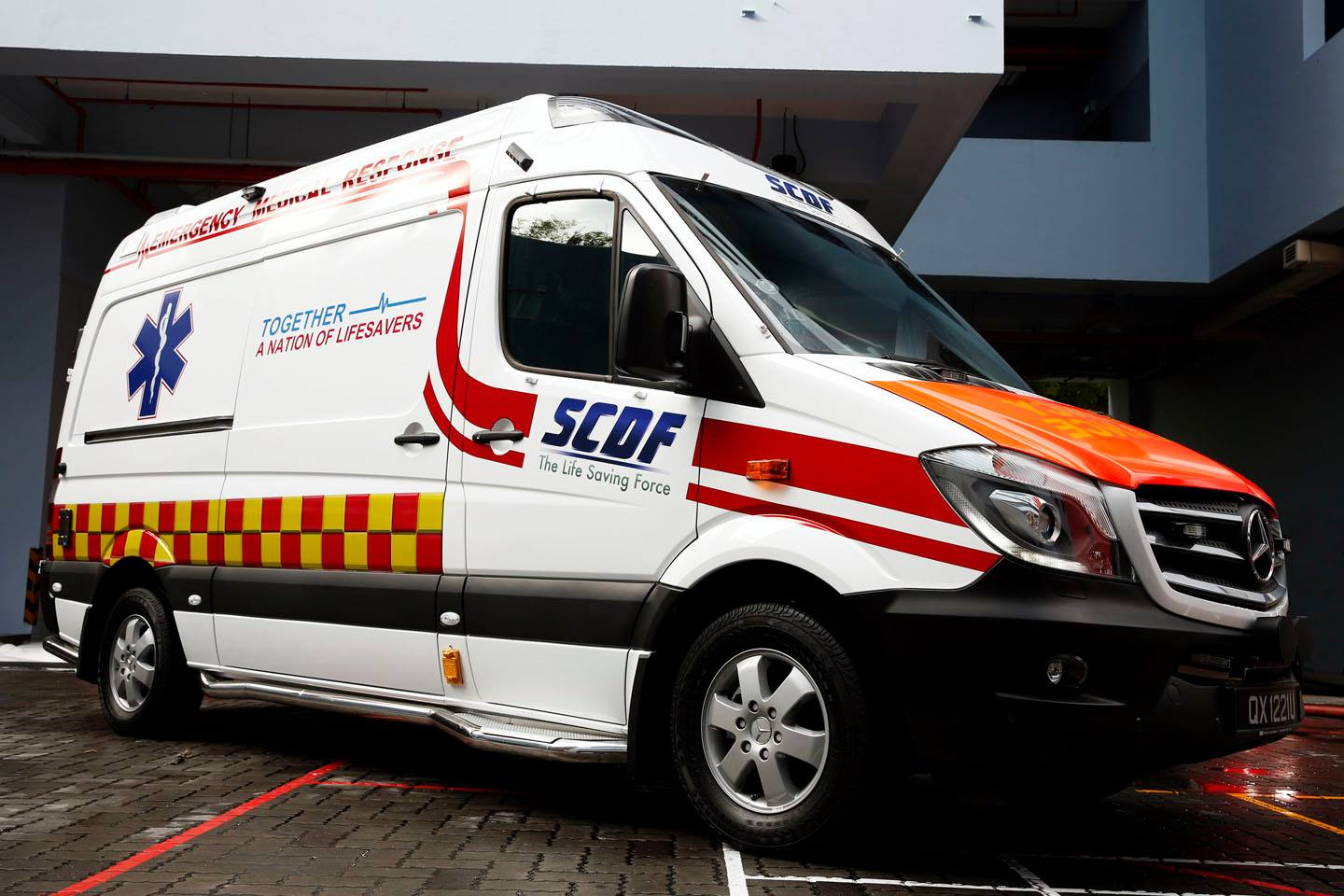
If you call an ambulance for a non-emergency case, you might be depriving urgent cases of valuable resources.
Image credit: SCDF
Since April 2019, the SCDF does not fetch non-emergency patients in order to prioritise real, urgent emergencies. If you’ve just got tiny bruises and scratches but want to double confirm you don’t have a concussion, be considerate by calling for a non-emergency private ambulance at 1777 or even hail a ride to the nearest hospital for peace of mind.
However, unless you’re a doctor, it can be difficult to determine which injuries are serious enough to be considered emergencies. Heavy bleeding, fractures and sharp pains are major symptoms to look out for, in addition to injuries sustained by motorcyclists and pedestrians who are not as protected as car passengers.
If you’re unsure, call 995 to summon an ambulance team who will be able to evaluate the situation at no cost. They will either convey the emergency victim to the hospital A&E or provide medical advice and triage.
5. Arguing with the other driver
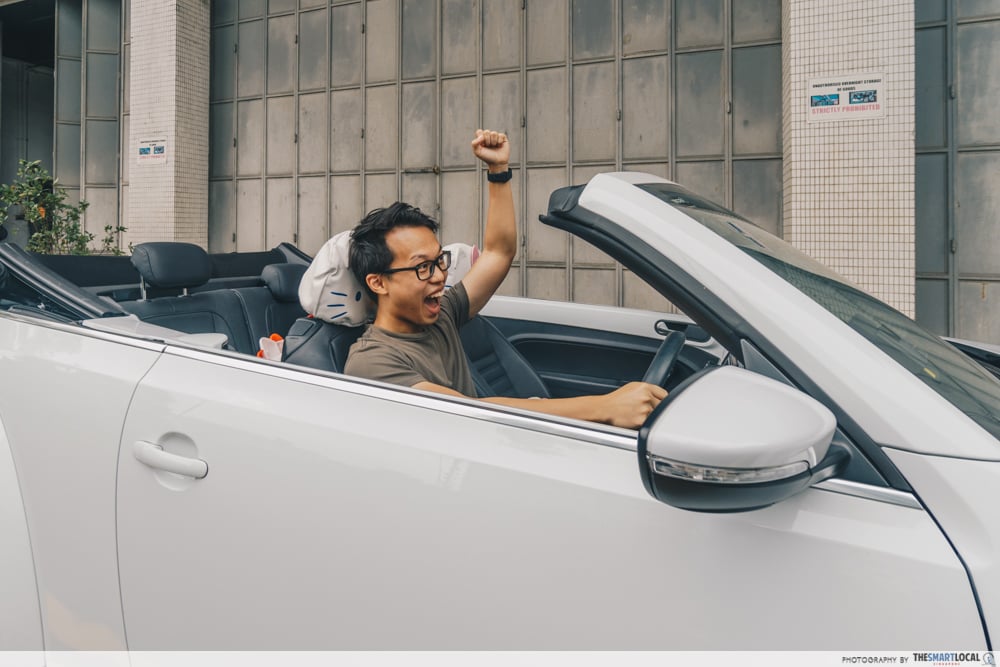
No need to get mad – let your insurer settle the dispute for you.
Accidents suck. They throw your schedule out of the window and create unnecessary trouble as your car sits at the workshop and you stand cramped on an MRT train for the next few weeks.
However, there’s no need to add stress by debating the whodunnit – simply exchange the following information with all drivers involved:
- Full name
- NRIC number
- Contact number
- Home address
- Insurance information
After that, carefully document the evidence before letting the insurance companies settle it for you. After all, you’re a paying customer, and that’s literally their job.
Getting all worked up would just increase your chances of accidentally letting loose with verbal abuse – landing you into pointless legal trouble.
6. Hiding information from your insurance company
You fork out a large sum for auto insurance monthly, and it’s understandable if you’re terrified of losing your no claims discount (NCD) by breaking your no-accident streak.
However, if you’re tempted to keep your insurer in the dark and settle the accident yourself, be warned! If your insurance company finds out that you’ve been keeping mum about your crash, they can charge you a higher premium or impose a higher excess.
If you opt for personal settlement, it’s wisest to always keep your insurer in the loop, and limit personal settlements to minor mishaps like scrapes and scratches.
7. Missing out important photos when gathering evidence
Not everyone’s a photographer, but the photos you take at the scene of the accident is one of the most important sources of evidence in the claims process.
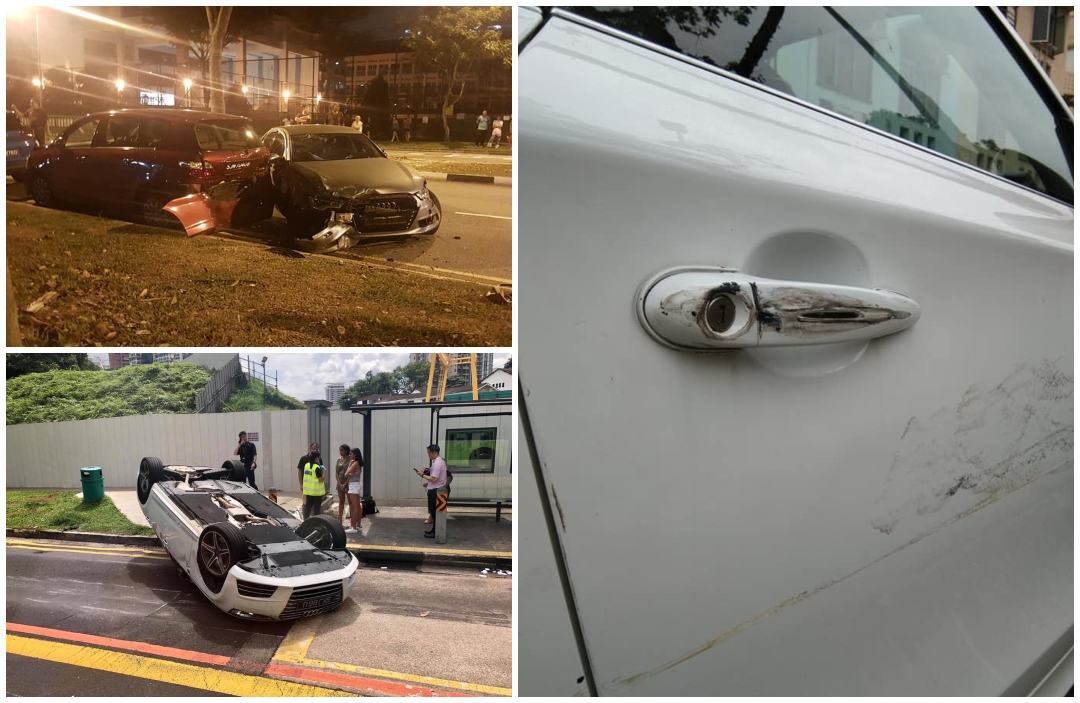
After an accident, be sure to document the scene well, including landmarks, license plates of vehicles involved and close-up shots of the damage sustained by the vehicles.
Image credit (clockwise from top left): Marie Yeo, Evan Yiu, Beh Chia Lor
Making sure to keep yourself safe from the oncoming traffic, make sure you get the following from multiple angles:
- The full scene of the accident with landmarks or signboards
- Road conditions – the traffic density, visibility, weather, road surface and obstacles.
- How the vehicles involved are arranged
- The damage sustained by each car, along with pictures of the license plates
- Debris, if any.
These pictures, in addition to the footage from your dashcam, will be useful information for your insurer as they decide who bears the liability of the drivers involved. If the lighting conditions are poor, you can even sketch the scene out.
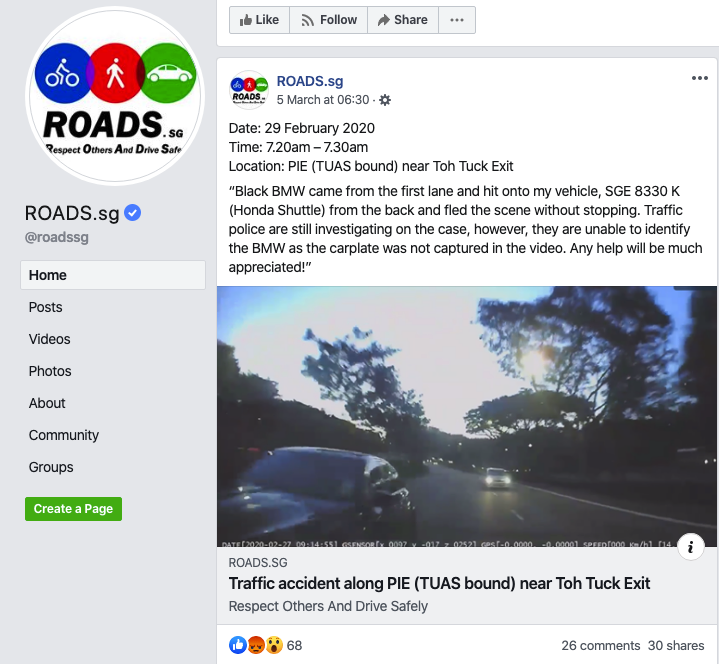
An appeal for witnesses on the Roads.sg Facebook page
Image adapted from: Roads.sg
Pro tip: if you want to make your case bulletproof, ask around for the particulars of witnesses and fellow road users with dashcam footage. If you forgot to do so in the panic of the moment, you can even reach out to groups like Roads.sg to appeal for witnesses.
8. Heading to the nearest workshop
Your wheels are damaged, and all you want to do is to get back up and running. Before you call an expensive tow truck and get hauled to the nearest workshop, hold up! If you opt for unapproved workshops, your claims process might be complicated and your hefty repair costs might not be covered.
Instead, make sure to ask in advance so you know exactly which shops to consider in such a situation.

Image credit: Vinsautogroup
Pro tip: For even less stress, opt for vehicle insurance plans that cover towing costs.
How to prepare yourself in case of an accident
For peace of mind, here are some easy precautions you can take so that you remain cool as a cucumber in the worst-case scenario.
Install front and rear-facing dash cams
If a picture tells a thousand words, videos must be worth millions. A front- and rear-facing dash cam will be able to give investigators a more complete picture of how the accident happened – meaning that justice is served.
Print out relevant forms and documents
Most information you require during this trying time can be found on the internet, but of course, your phone’s battery will be flat just when you need it the most. To avoid unnecessary stress, keep a copy of the following in your car:
- Accident checklist (a print-out of this article works, too)
- Private settlement forms
- Insurance details
- List authorised workshops to be obtained from your insurer
Accidents can happen to anyone, at any time. To help yourself and others in the event of an emergency, keep these essential items in your car:
- Flashlight
- First aid kit
- Pen and paper
Also, ensure you know where your hazard triangle is and how to deploy it.
What not to do after a car accident in Singapore
Putting a ding in your expensive car can be a terrifying experience, but with preparation and these pointers in mind, you’ll have no reason to worry if you slam the brakes too late.
Check out our other articles on common mistakes:
- Common babycare mistakes made by first-time parents
- First-time home renovation mistakes millennials make
- Everyday mistakes that damage eyesight
- Shopping mistakes that make you spend more
Photography by Rae Phang
